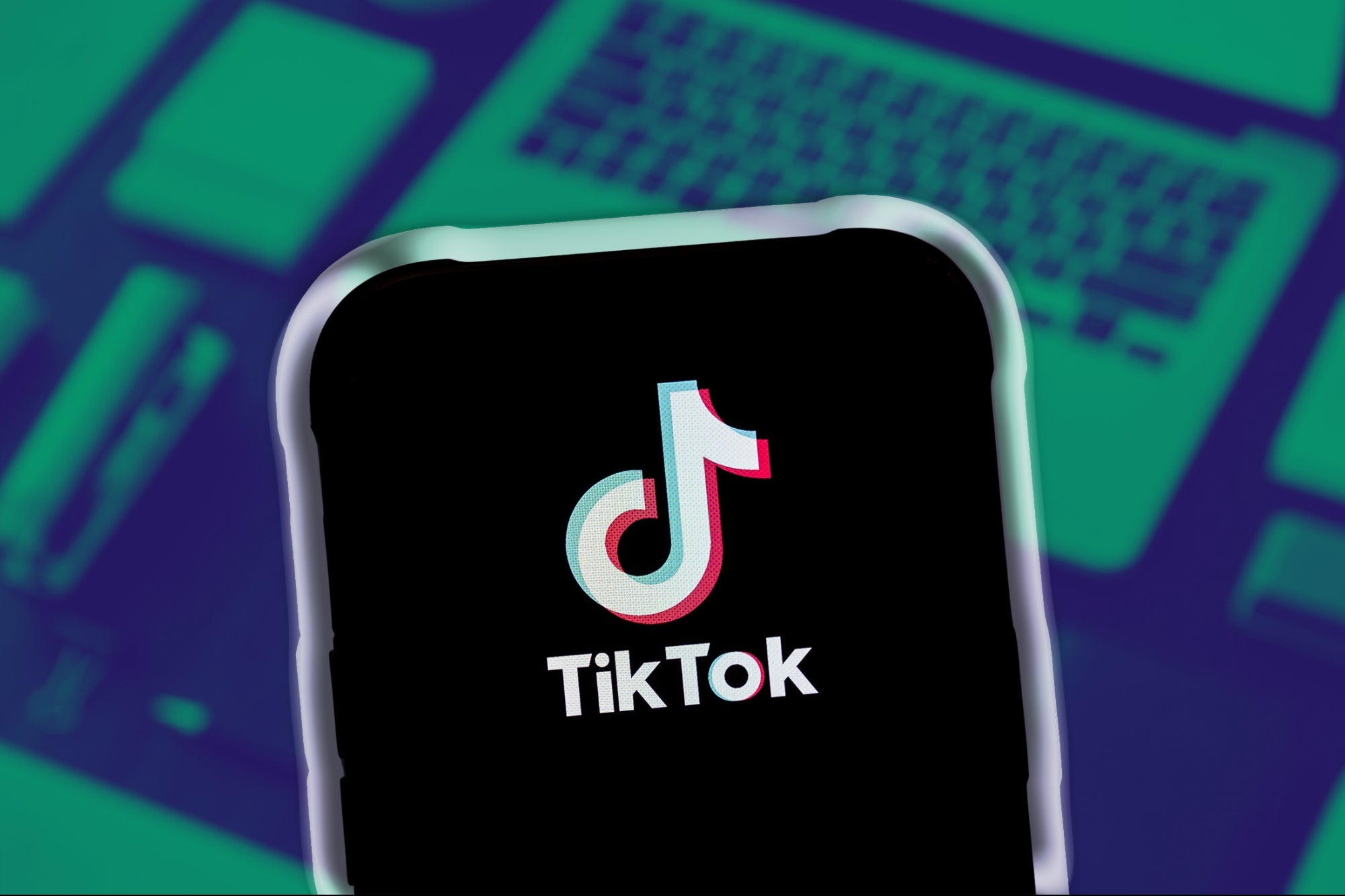13 Benefits of Using AI-Powered Applicant Tracking Systems AI-powered applicant tracking systems are seen as the future of recruitment, automating mundane tasks and eliminating unconscious bias.
By Lilia Stoyanov Edited by Jason Fell
Opinions expressed by Entrepreneur contributors are their own.
You're reading Entrepreneur Europe, an international franchise of Entrepreneur Media.

Using the power of technology is not a luxury but a need in today's competitive and fast-paced employment environment. The recruiting industry is not an exception to how artificial intelligence (AI) is changing the way we do business here in Europe and abroad. An AI applicant tracking system (ATS) automates candidate screening, tracking, and ranking by analyzing resumes, skills, and qualifications, significantly enhancing hiring efficiency. AI-enabled applicant tracking systems are revolutionizing the hiring process, not just streamlining it.
Let's explore how combining AI with ATS improves hiring procedures and provides significant advantages to both businesses and job seekers.
What is an applicant tracking system (ATS)?
An ATS is HR software used to take care of the recruitment process and applicant tracking, including automating tasks related to job posting, matching candidates to job descriptions and navigating candidates through the hiring process. The applicant tracking systems are typically used as a digital database to store and manage candidate data, such as cover letters, resumes, and recruitment correspondence. By automating administrative tasks, an ATS streamlines the hiring process, allowing recruiters to organize and track each candidate's progress through the hiring pipeline efficiently. Additionally, an ATS simplifies the process of posting job ads, enabling seamless advertisement of job openings on a wide range of job boards tailored to specific industries, job functions, regions, and job titles.
Statistics show how important applicant tracking systems are to the recruiters. Approximately 75% of large organizations use applicant tracking systems, and 94% of recruiters who use them say they have improved the hiring process. An ATS may manage a multitude of previously labor-intensive processes, from arranging interviews to placing job adverts on many internet job boards. These technologies are essential in today's recruitment environment because they help organizations manage the enormous volume of applications they receive on a daily basis.
What is an AI ATS?
An ATS that incorporates AI does so by combining sophisticated algorithms intended to improve and automate several parts of the hiring process. AI adds a degree of sophistication to ATS that enables these systems to learn from data, identify patterns, and make informed decisions, it does more than just automate processes.
AI integration with applicant tracking systems has significantly increased recruitment efficiency. For example, companies utilizing AI-enhanced applicant tracking systems have shown a 50% decrease in the time-to-hire and a 20% increase in the caliber of hires. Additionally, recruiting teams are saving an average of 14 hours a week by automating repetitive operations. This extra time can be used for more strategic projects like company branding and candidate engagement.
Through the use of AI, applicant tracking systems go from being simple tracking tools to strong recruitment partners that provide predictive insights and more intelligent decision-making skills, hence improving the recruitment process's alignment with company strategy. Streamlining recruitment processes through AI and machine learning enhances automation, reduces biases, saves costs, and improves the candidate experience, optimizing the overall efficiency of recruitment processes.
13 benefits of using AI in ATS.
The hiring process is revolutionized by integrating AI into applicant tracking systems since it increases productivity, improves candidate quality, and provides in-depth insights into recruitment tactics. The following are 13 noteworthy advantages of AI in ATS:
1. Enhanced efficiency in screening.
Artificial intelligence-driven applicant tracking systems automate the screening process by shifting through hundreds of applications to quickly identify qualified candidates who meet specific job requirements. This AI-powered approach not only decreases the amount of manual labor but also expedites the hiring process by efficiently finding applicants who fit particular job criteria.
2. Improved quality of hire.
The applicant tracking systems evaluate candidate's qualifications, background, and likelihood of fitting in with the company culture using complex algorithms. As a result, better candidates advance through the hiring process, ultimately raising the caliber of hires as a whole.
3. Reduced bias in hiring.
AI can be programmed to ignore demographic information about candidates such as gender, race, and age, focusing purely on skills and qualifications. This helps in making the hiring process more equitable and reducing unconscious bias.
4. Cost reduction.
AI-powered applicant tracking systems can decrease the cost per hire by automating repetitive tasks. AI's speed and efficiency reduce the requirement for significant HR staff engagement, which lowers operating expenses.
5. Better candidate experience.
Throughout the hiring process, candidates can receive rapid feedback and updates from AI-driven platforms. By improving the candidate experience, this engagement boosts the company's reputation as an employer.
6. Predictive analytics.
AI ATS can forecast outcomes like the possibility that a candidate would succeed in a position by analyzing past hiring data. Recruiters are able to make better judgments thanks to this predictive insight.
7. Streamlined communication.
With the use of AI, applicant tracking systems may automatically notify and remind candidates about the status of their applications. This guarantees a seamless hiring process and sustained candidate engagement.
8. Enhanced job description posting.
AI-powered ATS can optimize job advertisements based on the data of what has performed well in the past, increasing the visibility of postings to suitable candidates and improving response rates.
9. Automated interview scheduling.
Setting up interviews might be difficult. AI ATS saves time and minimizes scheduling conflicts by managing calendars, arranging interviews, and automating interview scheduling with features like seamless calendar syncing, automated check-ins, self-scheduling for candidates, and reducing time-to-hire through synchronized calendars. Furthermore, scheduling interviews becomes a breeze with AI, enhancing the candidate experience with personalized interactions, real-time application updates, and keeping candidates engaged, which in turn positively impacts the employer brand.
10. Real-time reporting.
The real-time analytics these platforms offer enable HR departments to monitor the success of their hiring initiatives. For the purpose of making strategic decisions, metrics like time-to-fill, cost-per-hire, and source of employment are easily accessible.
11. Scalability.
AI-driven applicant tracking systems are ideal for companies that are growing quickly or that have seasonal swings in hiring demands since they can readily scale up or down in response to those needs.
12. Continuous learning and improvement.
Artificial intelligence systems continuously refine their algorithms by learning from choices and results. Over time, these insights provide ever-improving hiring procedures and results.
13. Integration with other HR tools.
AI-powered applicant tracking systems can easily interface with payroll programmes, HRMS, and performance management programmes, forming a one platform for handling all HR functions.
What is the main purpose of ATS?
An applicant tracking system's primary objective is to streamline and organize the hiring process. Application tracking systems automate candidate data maintenance, follow candidates' progress through the recruitment pipeline, and facilitate communication between recruiting teams, all of which significantly reduce the administrative burden on HR departments.
This centralized method aids in making sure that no applicant is passed over and that the hiring procedure is carried out effectively and quickly. By automating tasks such as candidate screening, tracking, and ranking, ATS technology significantly enhances the productivity of hiring managers and streamlines recruitment, allowing them to focus more on evaluating soft skills, personality traits, and cultural fit.
Which applicant tracking systems use AI?
AI has been utilizedd by many contemporary ATS platforms to improve their functionality. Among the well-known instances are:
- iCIMS Talent Cloud: Provides AI-driven solutions for automating communication and matching talent.
- Transformify(TFY) AI-powered ATS: leverages predictive analytics to provide insights into the predicted success rate of a job candidate analyzing lots of data regarding candidate's skills, work experience, the type of jobs the candidate applied for, etc. (Full disclosure: I'm the CEO of Transformify.)
- SmartRecruiters: AI is used to improve applicant sourcing and offer talent insights.
- Greenhouse: Offers AI-powered solutions to enhance candidate score and job posting optimisation.
- Lever: Uses AI to streamline candidate profiling and parse resumes.
These platforms serve as examples of how AI can automate and add levels of intelligence to traditional recruitment procedures. Additionally, AI-powered ATS significantly enhances candidate sourcing by automating the sourcing and engagement of top talent, making the recruitment process more efficient and effective.
How does an ATS help in compliance?
An ATS is beneficial for ensuring compliance in multiple ways.
- Standardization: Adheres to industry norms and employment legislation by implementing uniform recruitment procedures.
- Documentation: Maintains an audit trail that may be essential for legal reasons by automatically recording all recruitment-related activity.
- Data security: Handles private candidate information in accordance with laws governing data protection, such as GDPR.
- Reporting: Produces reports that support regulatory compliance monitoring and documentation.
All of these features highlight how important an ATS can be for increasing recruiting efficiency while also ensuring the compliance with all legal and ethical requirements.
What are some additional features of an ATS?
In addition to their fundamental characteristics, modern applicant tracking systems come with a variety of advanced features meant to improve the hiring procedure even more. An ATS can effortlessly post job openings to multiple job portals and social media platforms, streamlining the hiring process by reaching a larger talent pool and leveraging AI for tasks like writing job descriptions and scheduling interviews.
- Integration with social media: Provides recruiters with the ability to publish job vacancies directly to social media sites and track applications from many sources.
- Mobile accessibility: Offers applications that are tailored for smartphones so that users can connect with the system and submit job applications using their phones.
- Career page hosting: Provides tools for creating and overseeing a properly styled career page that integrates with the applicant tracking system.
- Analytics and reporting: To assist HR in making defensible judgments, this section offers extensive reports on a variety of metrics, such as source effectiveness, cost-per-hire, and time-to-hire.
- Email marketing: Offers comprehensive email marketing solutions to keep candidates informed about new opportunities and developments.
How does an ATS help in reducing bias in the hiring process?
Through the following mechanisms, an ATS can considerably reduce prejudice in hiring decisions:
- Structured procedures: Ensures that each candidate is evaluated in accordance with the same criteria, standardizing the employment procedure.
- Features of blind recruitment: Some applicant tracking systems allow candidates' names, genders, and ages to be anonymized in order to prevent unconscious bias during the initial screening stages.
- Data-driven decision making: This approach encourages a recruiting process that is merit-based by evaluating candidates on the basis of their experiences and skills rather than on the basis of arbitrary criteria.
In summary, an AI-powered ATS is a comprehensive solution that revolutionizes the recruitment process, not merely a tool for tracking applications. An ATS that's powered by AI helps companies achieve their dual objectives of finding the appropriate people fast and maintaining a strong employer brand by increasing operational efficiency, decreasing biases, and improving the entire candidate experience. The use of AI in ATS will surely advance in sophistication as technology develops, giving HR managers even more freedom to take calculated risks with talent management.













